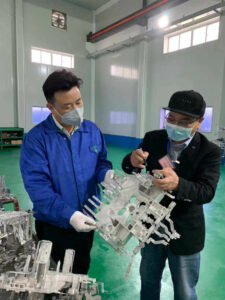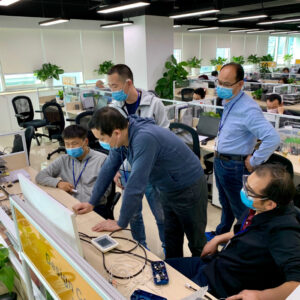First, the good news! As of March 12th, 2020, the coronavirus outbreak in China has been tapering off. Most provinces (which account for 1.3 billion people), except for Hubei, have had a single digit number of new infections for over 14 days. Depending on the recovery rules of local areas, factories are ramping up to work with intensive and complex monitoring measures in place. Shops are also opening up after being shut down for roughly a month and a half.
Factories in eastern China have for the most part reached full capacity. Southern China has recovered to about 70% of capacity. The “motto” for this recovery has been “ramp up hard and control the corona”. This means the worldwide shortage of supplies, such as face masks, should be over in days.
The bad news? The COVID-19 pandemic has started in other countries. Even in China, the re-establishment of the supply chain ecosystem will take time for each product manufacturing network and its specific supply chain. In general, a longer supply chain (product with a longer BOM list) will take a longer time to recover because any missing link will lead to a delivery problem. So far, statistics have reported that over 75% of worldwide supply chains were disrupted due to the COVID-19 epidemic.
Unlike any other natural disaster, such as earthquakes, tsunamis, and hurricanes, the coronavirus disruption has been arguably much wider and greater since it froze all activity in a whole country for over a month. This makes the recovery extremely challenging as every “cell” has to reborn from its dormant state and find its connections again in the system.
The Recovery Process
When we look at the impact of the virus, the recovery process has been a large piece of the whole picture. Here is a refresher of what that has entailed. Human resources are one of the most critical factors. The manufacturing of a product consists of many subcontractors working together in a timely manner. The internal organization of a single subcontractor consists of a number of employees who may have been visiting many different cities in China during the holidays and got held up as the outbreak progressed. These employees work in all types of positions such as admin, engineering, equipment management, accounting, purchasing, manufacturing, quality, material purchase, inventory, project management, etc. If all of these people do not make it back to work at the same time, it leads to dysfunction of the organization due to having to figure out how to fill in the gaps of missing staff. Because the coronavirus has different impact in different cities, it can take a long time and be unpredictable as to when an employee is able to come back to his or her position. Thus, most organizations will experience this malfunctioning period of time.
Consider a product manufacturing project that consists of 12 subcontractors, for example. This staffing issue alone can drag on the recovery process for a very long time.
The Challenges
During the recovery stage, there are many challenges facing each individual subcontractor – a cell of the ecosystem. A list of the challenges include:
- Overwhelming capacity issues
- Quality issues
- Financial issues
- Lower tier supplier issues
A large part of businesses today have adopted a Just-In-Time production model. This happens to be the worst model during this kind of disruption because without safety stock, businesses will suffer from an immediate shortage of supply. A major surge of demand on capacity occurs since each business needs their deliveries at about the same time, despite the slow HR recovery challenges of the subcontractors. Competing for the capacity becomes the key factor to digesting both lost capacities from the over one month of closures (1/24/2020 to 3/8/2020) and normal needs. Supply chains can take months to get back to normal due to this wave. It will be a major impact to on-time-delivery because of the lost time.
Quality will be a major problem during the back-to-business rush. As discussed before, lack of staff will be a major contributor. Manufacturing is the most demanding systems engineering work. In chaotic times, it will meet with Murphy’s Law, “anything that can go wrong will go wrong”, regarding supply chain performance.
Financial books of each subcontractor will look ugly. Without having had income and cash flow during the shutdown, most subcontractors will suffer serious financial problems. These problems will lead to payment problems to the sub-tier suppliers. The cash flow problem could cause a snow balling effect to the supply chain. Inevitably, some subcontractors could be out of business because of the disruption. Thus, an effective replacement action is needed in order to revive the supply chain back to operation. Qualifying new suppliers and resolving all ramping problems become the key to increasing recovery speed.
The E-BI Solution
E-BI’s mission is to ensure clients have a successful experience in global contract manufacturing. E-BI’s project management team was the first at ground zero. They are working with each subcontractor to ensure our job is the first on the cue of the production plan. Our quality and engineering teams are able to control and manage manufacturing processes onsite and are hands-on solving problems. Whenever there is a dead cell in the ecosystem, E-BI will turn on a backup subcontractor and ramp up production at its fastest speed to ensure delivery. Our project team has been working on the plan since February 8th, which is about one month ahead of competition.
Despite all of the challenges, E-BI is there on the front line helping our clients to fight for success with a positive, creative, proactive, and cooperative (the E-BI PCPC rule) mindset.

